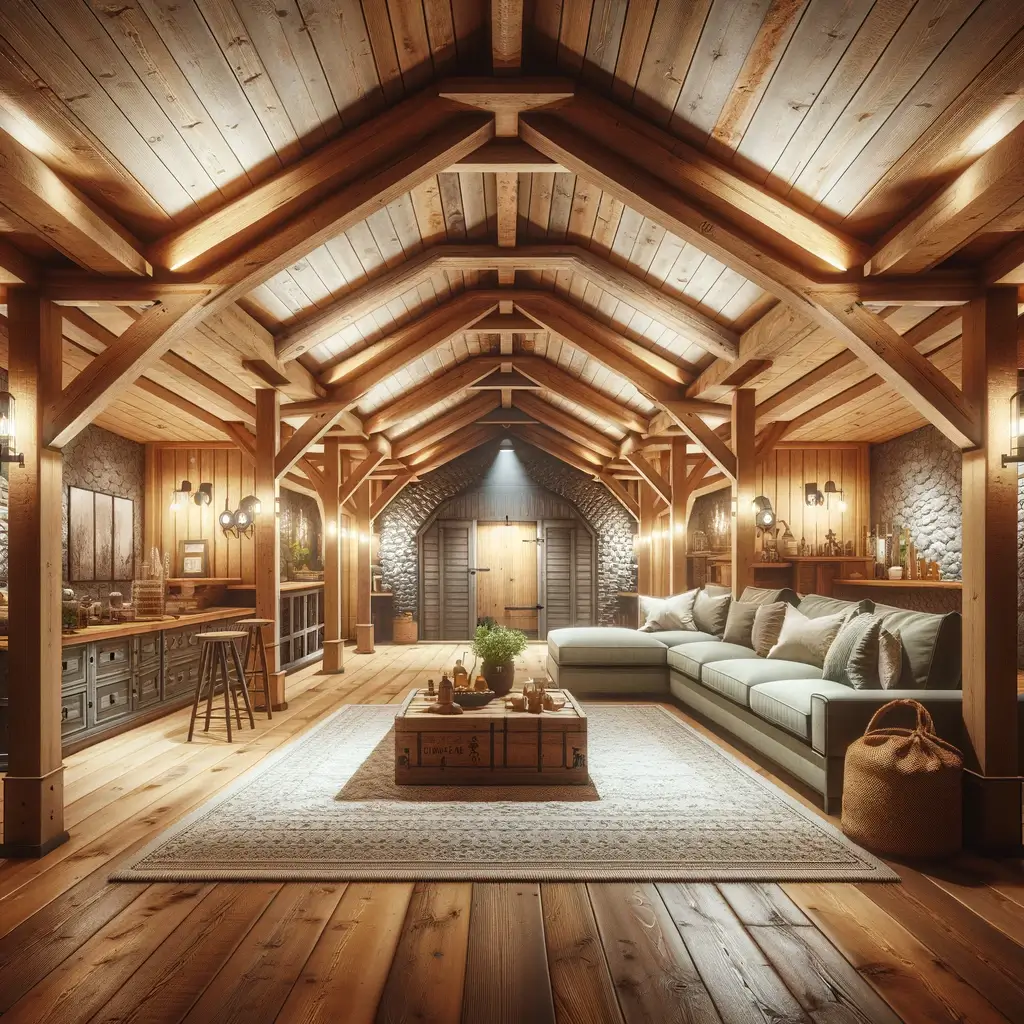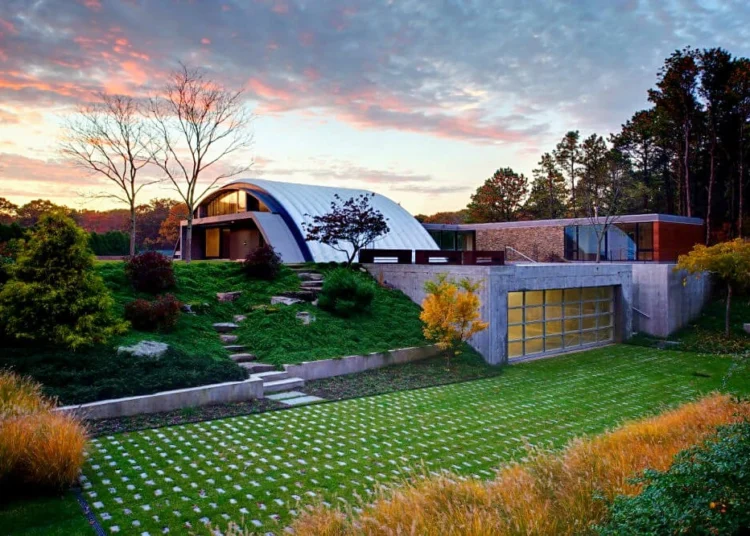Do barndominiums have basements? The answer to that question is both yes and no. It depends on what you mean by a “basement.” Some people use the term to describe any finished space below ground level.
In contrast, others reserve it for traditional basements with concrete floors and walls. So let’s take a closer look at what options are available for finishing the lower level of a barndominium.
A barndominium is a hybrid between a barn and a condominium. While they are most commonly used as homes, barndominiums can also be used as offices, retail spaces, or storage units.
One of the main benefits of a barndominium is that it can be built over a basement foundation, which provides additional living or storage space. In addition, building a barndominium over a basement foundation can help to protect against flooding.
Floodwaters are less likely to enter the home by elevating the main living area. As a result, barndominiums offer homeowners a unique combination of function and protection.
Are there any disadvantages to living in a barndominium?
While barndominiums can offer a unique and stylish living experience, there are also some potential disadvantages. One downside is that barndominiums can be difficult and expensive to heat and cool effectively.
Because they often have large, open spaces, it can be challenging to maintain a comfortable temperature without incurring high energy bills.
Additionally, barndominiums can be located in remote areas, making it difficult to access essential services and amenities like grocery stores and hospitals.
Finally, living in a barndominium can occasionally create feelings of isolation, as you may be far from your neighbors and other members of your community.
Why are barndominiums becoming so popular?
In recent years, barndominiums have become an increasingly popular housing option, particularly in rural areas. There are several reasons for this trend.
For one, barndominiums are often more affordable than traditional houses, making them an excellent option for budget-minded buyers. Additionally, their unique design can provide a sense of privacy and seclusion often lacking in more urban areas.
Finally, barndominiums are built with durable materials that can withstand severe weather conditions. This makes them a good choice for people living in areas with a risk of tornadoes or hurricanes.
Whatever the reason, it’s clear that barndominiums are here to stay.
Available Options for Finishing the Lower Level of a Barndominium

Oriented Strand Board (OSB)
OSB is a substrate made of wood chips and adhesives that are pressed and heat-treated to create large, flat panels. It is denser than plywood and has a rough, textured surface.
While OSB is typically used as an underlayment for finish floors, walls, and ceilings, it can also be used as a finish material in its own right.
When installing OSB as a finish material, it is essential to use adhesive designed for OSB and to install it according to the manufacturer’s instructions. In general, OSB should be installed over a smooth, level surface such as plywood or drywall.
Once the OSB is in place, it can be painted or stained to achieve the desired look. With its durability and versatility, OSB is an ideal material for finishing the lower level of a barndominium.
Advantages:
- Durable
- Versatile
- Affordable
Disadvantages:
- It can be challenging to work with
- It may require specialized tools and adhesive
- It may not achieve the desired aesthetic look on its own
Drywall
Drywall is a popular choice for finishing the lower level of a barndominium. Drywall installation is relatively straightforward and can be done by do-it-yourselfers with basic knowledge and experience.
While drywall requires additional prep work, such as taping and mudding, the finished product is well worth the effort. Drywall provides a clean, finished look that is perfect for any space.
Also, drywall helps insulate against sound and temperature, making it an ideal choice for use in a barndominium. If you’re considering drywall for your barndominium project, be sure to consult with a professional to ensure proper installation.
Advantages:
- Easy to work with
- Do-it-yourselfers can install it
- Provides a clean, finished look
Disadvantages:
- Requires additional prep work
- It May require professional installation
- It can be damaged easily
Steel
Barns are commonly known for their large open spaces and high ceilings. However, many barn owners find that they need more living space than what the upper level of the barn provides.
As a result, they often finish the lower level of the barn, creating a barndominium. Steel is a good choice when finishing the lower level of a barndominium. You have two options for how to carry out the steel: on your walls or your ceiling.
This gives a polished look and also protects the insulation and outside walls. In addition, steel is highly durable, meaning that it will stand up to wear and tear for years to come.
As a result, finishing the lower level of your barndominium with steel is an excellent way to add value and livability to your home.
Advantages:
- Durable
- It can be used on walls or ceilings
- Adds value and livability to your home
Disadvantages:
- It may be more expensive than other options
- It may require professional installation
- It may is not suitable for all barndominiums
Combination (Steel & Plywood)
The lower level of a barndominium is often unfinished space that can be used for storage, a workshop, or even additional living space. One popular option for finishing the space is a combination of steel and plywood.
Steel provides a durable and low-maintenance finish that is perfect for areas with a lot of wear and tear. Plywood is an inexpensive material used to create various looks, from rustic to modern.
Steel and plywood make a popular finish for farm buildings when used together. This combination can help you create a stylish and functional space that will last for years.
Advantages:
- Durable
- Inexpensive
- Versatile
Disadvantages:
- It May require professional installation
- It May not be suitable for all barndominiums
Plywood
One of the great things about using plywood to finish the lower level of a barndominium is its lightweight and easy to install. This makes it an ideal choice for do-it-yourselfers or anyone who wants to avoid the hassle and expense of hiring a professional contractor.
In addition, plywood provides a warm, natural look that can enhance the overall style of your home. Whether you’re looking for a rustic look or something more modern, plywood can help you achieve your desired aesthetic.
Plus, plywood is an affordable finishing option that can help you stay within your budget. So if you’re looking for a practical and attractive way to finish the lower level of your barndominium, plywood may be the perfect solution.
Advantages:
- Lightweight and easy to install
- Warm, natural look
- Affordable
Disadvantages:
- May not be as durable as other options
- May require regular maintenance
Other Finishes
Finishing the basement of your barndominium does not have to be a traditional drywall and paint project. Many other exciting and unique finishes can give your basement its personality.
Pallet wood, for example, can add a rustic touch, while tin siding (grain bin siding) can provide the space an industrial feel. Shiplap is another popular option for basement walls, and peg board can be used to create a functional and stylish storage area.
PVC plastic is another material that can be used to finish basement walls. It is available in various colors and textures. With so many options available, you are sure to find the perfect finish for your basement.
Advantages:
- Many different looks are available
- Can be unique and stylish
- Can be affordable
Disadvantages:
- May require professional installation
- May not be as durable as some other options
Which Interior Finish Will You Choose for Your Pole Barn?
There are various options available when it comes to finishing the interior of your pole barn. The type of finish you choose will depend on your personal preferences and the intended use for the space.
If you’re looking for a rustic look, pallet wood or tin siding may be a perfect choice. Steel may be the way to go if you need a more durable and low-maintenance finish.
And if you’re on a budget, plywood can provide a warm and natural look without breaking the bank. Whatever finish you choose, make sure it’s one you’ll be happy with for years to come.




















